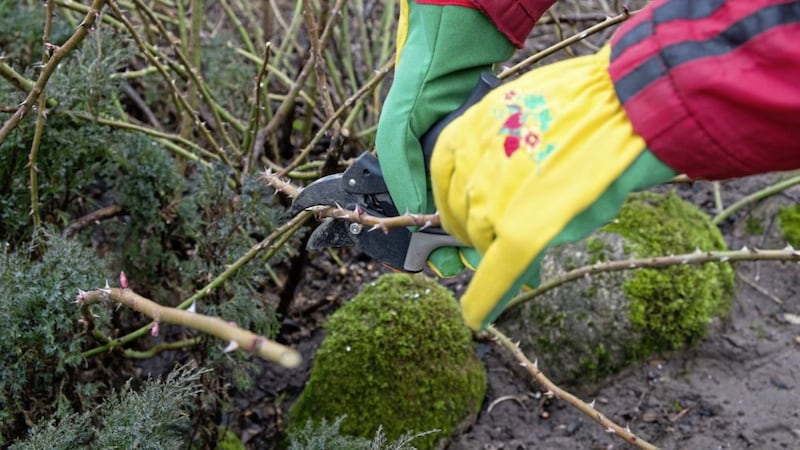WITH some appropriately bright weather, last Sunday’s vernal equinox sounded the starting gun on this year’s growing season. It was as if nature had suddenly turned a light on. With the passing of March 20, we are now enjoying more daylight than darkness over a 24-hour period, signalling the beginning of that intense period of reinvigoration that grips both the garden and the gardener. As the ground warms up, the buds bulge and the sap rises, we gardeners are sent into a state of busy preparation and dizzy anticipation.
The coming weeks are arguably the best time to be a gardener, because at the moment it's all optimism and ambition for the months ahead. We’ve yet to experience the problems with late frosts, pests and diseases that can challenge even the most accomplished plantsman or woman.
One annual ritual that helps us mark the beginning proper of the gardening year is pruning. While pruning does demand some expertise and a degree of dexterity, no gardener should be intimidated by it. A little reading-up on the subject, with particular regard to the species in your own garden, and you’ll have enough knowledge to grasp those secateurs with confidence and determination.
The pruner’s tools should be sharp and include the aforementioned secateurs, a set of loppers for thicker and prickly branches, and a pruning saw for those branches with a significant girth. Shears can be used on lighter bushes and plants where precision isn’t called for. All cuts should be made decisively at a 45-degree angle just above a bud or pair of buds. When handling thorny material, always wear gloves.
Pruning is important for a number of reasons and ensures a plant doesn’t become leggy and unruly, which ultimately weakens it.
Plants will respond better to pruning as they emerge from dormancy. There’s less risk of disease infecting the cut in the colder weather, so the earlier you perform the surgery the better. A spring prune also helps get the maximum length from the growing season, ensuing the tree or shrub is at its strongest and most robust come the autumn.
– Five plants that benefit from a prune:
Clematis ‘Etoile Violette’ – This clematis is one of the most popular varieties and falls into ‘Group 3’, as it flowers on this year’s growth, meaning it should be pruned hard in early spring. If left unpruned, clematis turn into a mass of tangled stems with an unsightly foliage-free base.
Honeysuckle – My wife inadvertently chopped our Lornicera last year but now she’ll testify to the merits of a spring pruned honeysuckle, which produced a bounty of beautifully scented flowers later in the year. Be more cautious with early-flowering types, and delay cutting back until after they’ve flowered.
Dogwood – Cornus alba is treasured for its bright red stalks which light up the winter garden. The brightest bark is on new growth, which means cutting back to almost ground level in early spring produces the best displays.
Buddleja – mainstay of urban car parks and railway embankments, buddleja is also much-loved by gardeners and butterflies. To maximise the number of nectar-rich purple blooms cut your shrub back hard in spring.
Hydrangea – Not as fashionable as they once were, hydrangeas are still an easy-to-grow perennial that bring both summer and autumn colour. Cut back stems hard in spring to improve shape and encourage more flowers.








